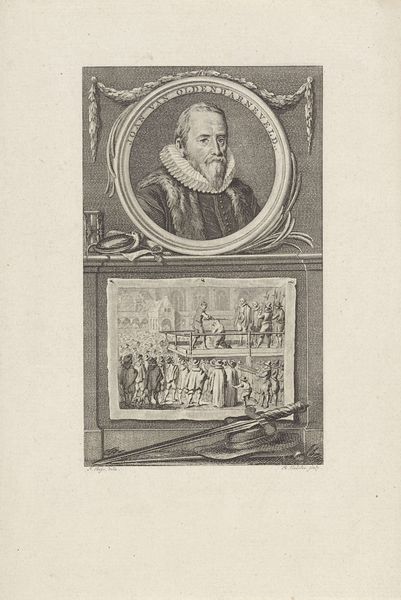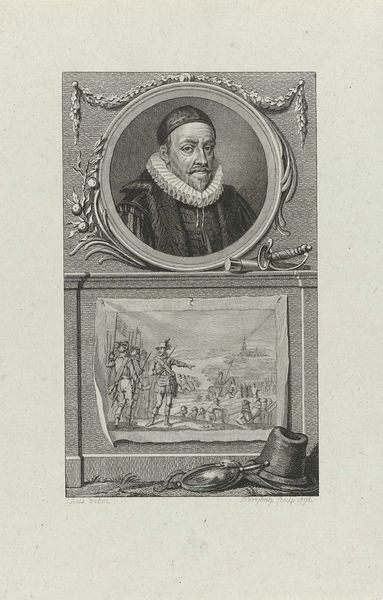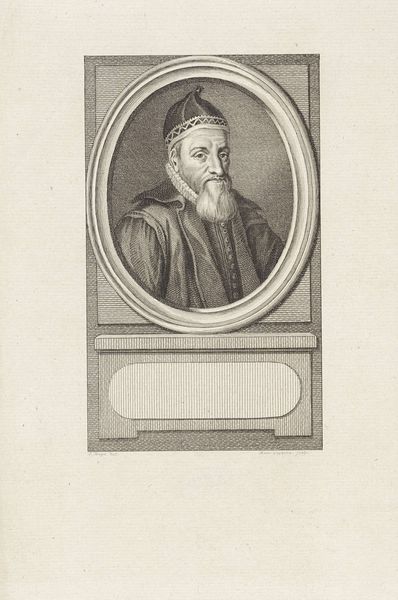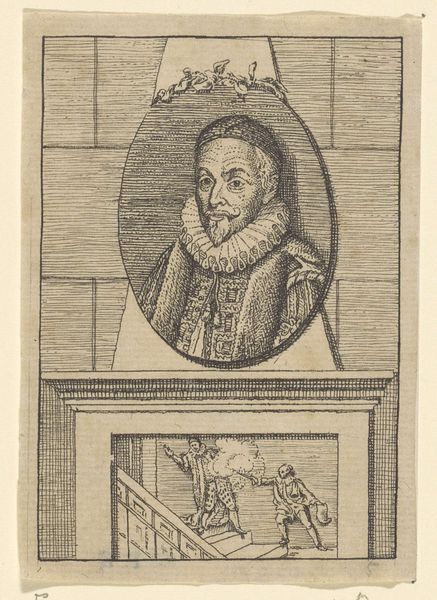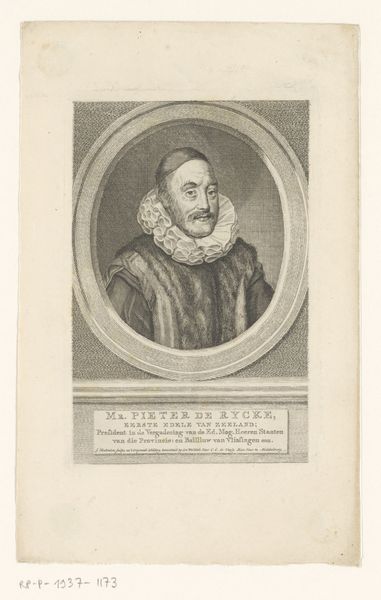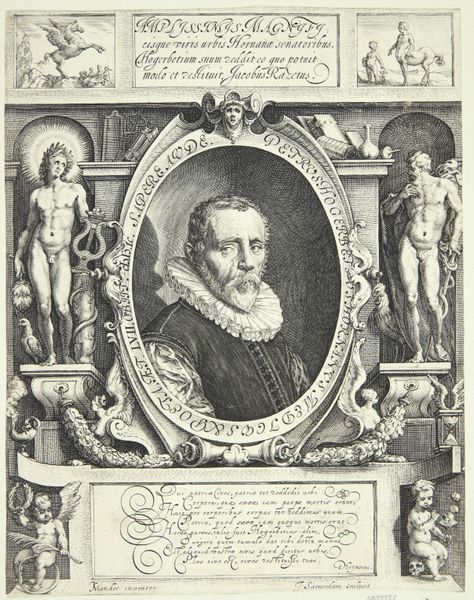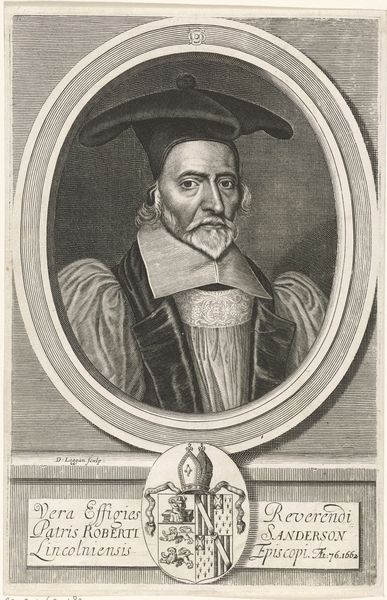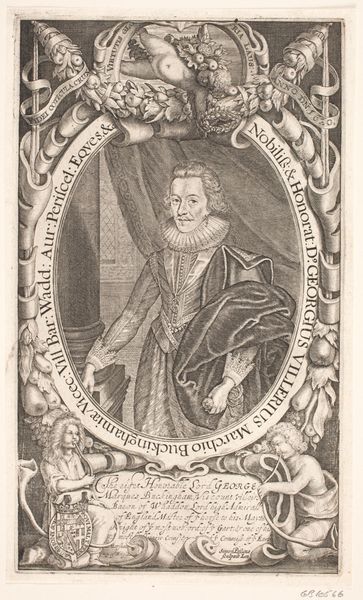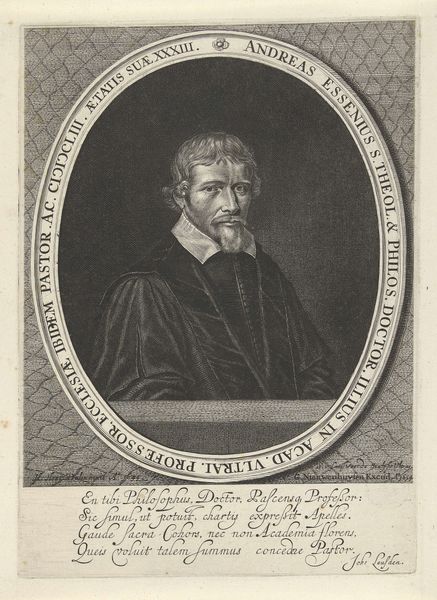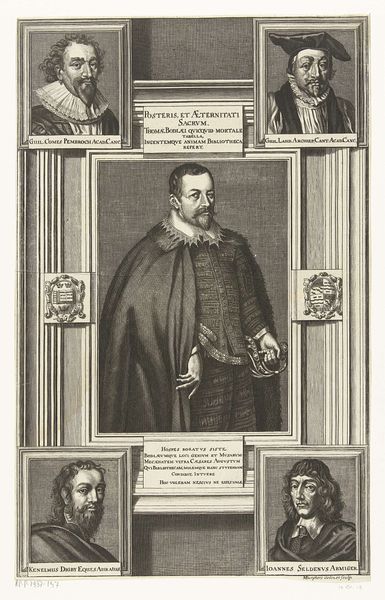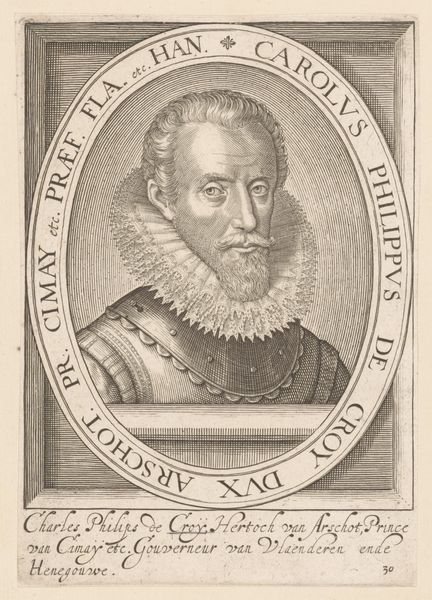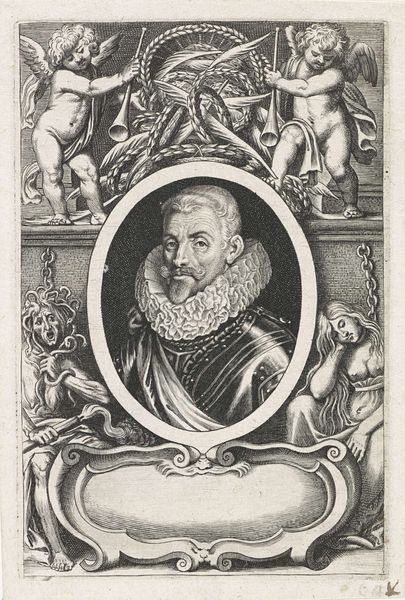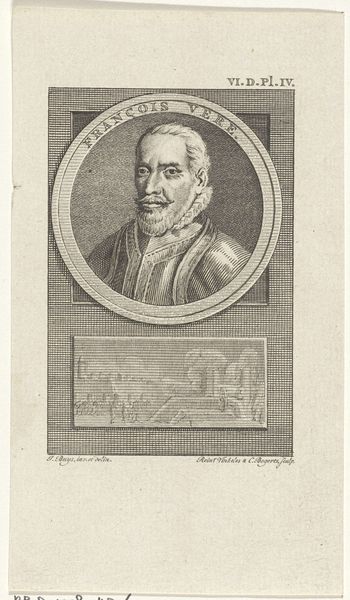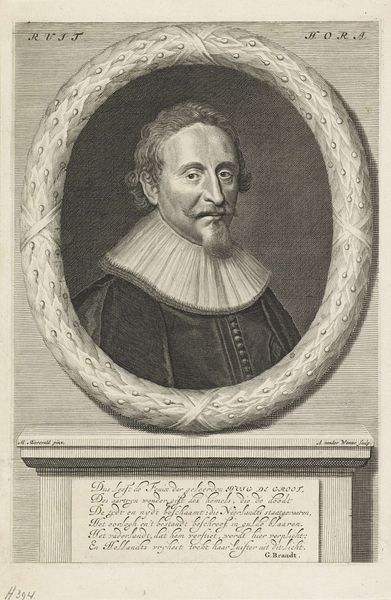
Portret van Johan van Oldenbarnevelt met een afbeelding van zijn onthoofding, 1619 1751 - 1799
0:00
0:00
Dimensions: height 150 mm, width 95 mm
Copyright: Rijks Museum: Open Domain
Curator: Here we have a rather striking print entitled "Portret van Johan van Oldenbarnevelt met een afbeelding van zijn onthoofding, 1619." It’s attributed to Reinier Vinkeles and likely dates from the late 18th century. Editor: My initial impression is how unsettling the composition is. It presents a portrait alongside a graphic depiction of execution, an unusual pairing that lends a chilling quality. Curator: Indeed. Vinkeles executed this print using engraving and etching techniques. The upper portion features a portrait of Johan van Oldenbarnevelt, a key figure in Dutch history, framed in an oval. Below that, quite vividly, is an image of his beheading. Editor: The juxtaposition is heavy with commentary, wouldn't you say? Consider the labor involved in producing these prints, probably for wide distribution. This wasn't just art for the elite; it was a readily available means of shaping public memory and sentiment around Oldenbarnevelt’s controversial execution. Curator: Absolutely. Oldenbarnevelt was a pivotal statesman, and his execution was a highly contentious event. This print is interesting as a piece of political communication as much as it is an artwork. It makes you wonder about the artist's or the publisher’s intended audience and purpose during a later period of Dutch history. The stylistic rendering harks back to the Dutch Golden Age, yet this print was made much later, indicating continued relevance or perhaps re-interpretation of the past. Editor: The implements depicted—the sword, the clothing textures meticulously rendered through engraving—all point to the material conditions surrounding justice and power. And let's not overlook the choice to disseminate this image as a print. This brings to light the means of production by which potent imagery became part of the social fabric. It invites contemplation about the ethics surrounding producing an image, and mass-producing an image like that, of state violence. Curator: This piece definitely provides layers of meaning. Beyond the immediate historical context, it offers insights into how the past continues to be represented, debated, and re-evaluated through visual culture. Editor: I agree, reflecting on the materials and processes behind this image really exposes questions about its place in the public sphere, past and present.
Comments
No comments
Be the first to comment and join the conversation on the ultimate creative platform.
